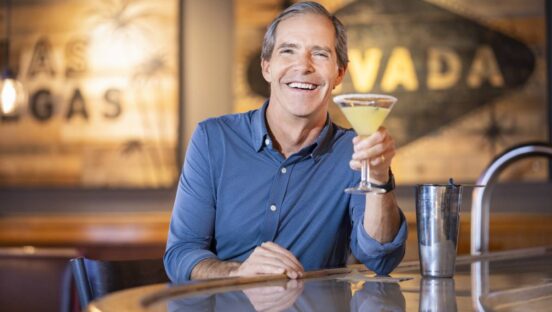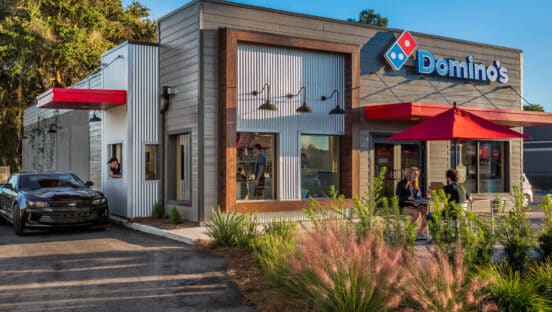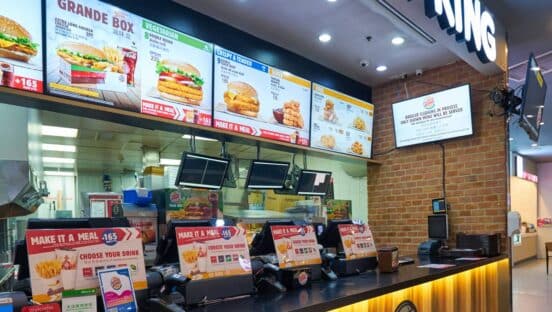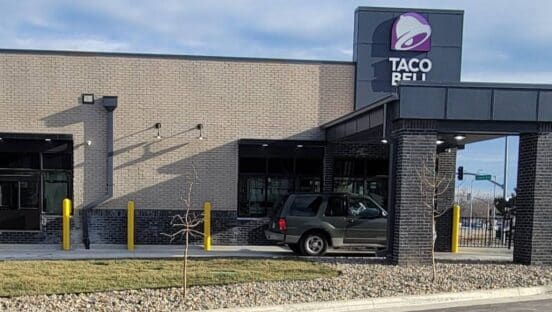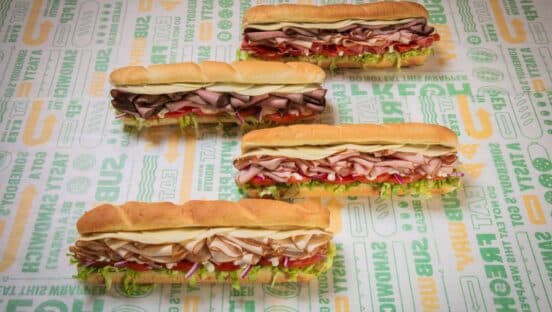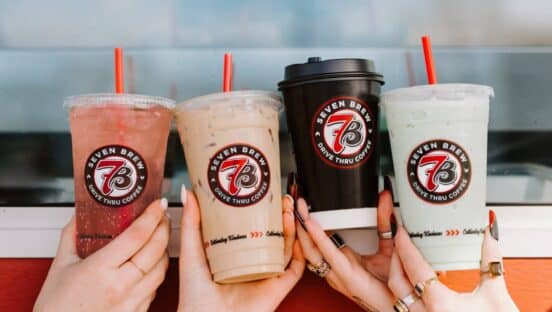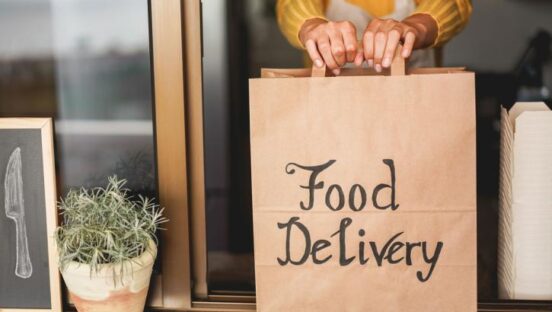A lot has been said about the dramatic transformation the limited-service restaurant industry has experienced in the last five to 10 years. Observers have noted a range of factors that have shoved along the change, from the pressures to offer healthier food to younger generations’ desire for more creative menu opportunities.
But there’s a bigger reason for all of this change, an explanation for why innovation and development in the limited-service space has entered overdrive: competition. The sheer number of brands crowding into every niche imaginable in quick service has forced players to become better, faster, stronger, more convenient. And that pressure to perform at a higher level has had broad implications on the drive-thru operation, where companies have tinkered with various components in an effort to create an outdoor lane that facilitates a top-shelf brand experience.
QSR has monitored the changing drive thru for the last 16 years, measuring the industry’s evolution in metrics such as speed and accuracy. A few things have become clear over the last few years. For one, it was obvious that speed and accuracy were going in different directions, the former plateauing, even slowing down, as menu items became more complex, the latter improving as brands stressed operational efficiencies. Secondly, as the data conformed to more rigorous standards at each of the benchmark brands, the story about the drive-thru operation’s present and future became less interesting; the data, less practical.
This year, we approached the Drive-Thru Study considering how the data and the story might be most resourceful for the quick-service industry. To that end, we researched 23 of the top drive-thru brands, and, rather than analyze the data based on individual chains, we took a look at the numbers through two separate lenses that are increasingly shading the industry conversation. One is individual dayparts, reflecting operators’ push toward more business during nontradtional meal times; the other is menu segment and the crowding field that most major brands find themselves playing in. It’s all in an effort to better set a precedent for what really matters in your business: how to beat the competition.
“Instead of a chain-by-chain analysis, we thought it would be interesting to examine how service during different dayparts might look,” says Brian Baker, who has headed the Drive-Thru Study since its inception. “We also segmented chains based on menu so we can explore differences based on what you might be craving any particular day. Although some of the results were expected, there were a few surprises along the way, too.”
Traditionally, speed, accuracy, and a friendly, pleasant experience have always been top concerns for quick-service operators as they evaluate the success of their drive thru. But each has gone its separate way in the last several years as the brands have tailored their drive thrus to evolving consumer demands.
For its part, speed used to be a badge of honor for many chains. Faster service means happier customers and more cars through the line, both of which can boost perception and sales. Last year, though, the narrative on speed of service in the drive thru took a big U-turn. The overall average speed of service across the benchmark group slowed down about eight seconds over the previous year, to 180.83 seconds, and operators said menu complexities and the push toward premium items were responsible.
The slow-down trend appears to have continued this year. While it’s impossible to compare this year’s speed-of-service data directly to last year’s, the numbers this year were still telling: overall speed of service across the 23 brands studied was 203.29 seconds. And once again, brand representatives say, premium menu items are to blame.
“I think what’s changed … is consumer needs are changing rapidly. It’s not really that we’re changing the service; it’s how we accustom our mindsets to say that not everything is going to be a Doritos Locos Taco that you deliver in the restaurant,” says Mike Grams, chief operating officer of Taco Bell. “There are going to be more complex products coming in, and we just have to change our training methods, our engagement plans in the restaurant, and how we approach them so that we can execute and still be relatively at a good speed that customers are going to be comfortable with.”
Taco Bell witnessed this shift firsthand in 2012 when it added its Cantina Bell menu, a line of premium burritos and bowls that include as many as 10 ingredients. Other quick-service concepts are similarly marching into new territory as customers demand better, healthier, and more adventurous food options. With competition so intense, burger, sandwich, and chicken concepts are looking for ways to either grow beyond or build on top of burgers, sandwiches, and chicken, whether it’s through customizable menu options, updated recipes, or unusual ingredients. This could help explain the long average service times for each segment; burger concepts clocked in at 203.75 seconds with an average of 1.79 cars in the drive thru, bone-in chicken chains experienced 215.85-second service times with just one car on average in the lane, and sandwich brands brought up the rear with a 239.88-second mark and 2.2 cars in the stack (for comparison, the fastest brand in last year’s study, Wendy’s, enjoyed a 133.63-second speed-of-service time with an average of 1.78 vehicles in the line).
Perhaps more noteworthy, though, are the differences in speed-of-service times among the dayparts. Speed of service during the breakfast and snack dayparts, for example, is much faster compared with lunch, dinner, and late night, and the two dayparts are very similar in both time through the line and number of vehicles rolling through. Breakfast enjoyed an average speed of service of 174.88 seconds with 1.94 cars in the line, while the mid-afternoon snack came in at 173.39 seconds and 1.98 cars present.
“The piece that surprised me more than anything was the mid-afternoon snack,” Baker says. “It’s equally busy to the other dayparts and they’re just killing it on time. You would expect for lunch and breakfast, you would have your No. 1 best employees in place, shoes shined, ready to roll, and in the middle of the afternoon you relax and catch your breath. But I look at this and say, it’s just as busy in the middle of the day as it is for dinner or lunch or breakfast, and they are even faster.”
[pagebreak]
The busyness and efficiency of the snack daypart reflect a growing trend across the limited-service restaurant industry in which more customers are making purchases outside of the three traditional meal times, either for dieting purposes or as a way to fuel slow times in their workday. It’s a trend that has forced operators to retool their systems to accommodate new traffic patterns and customer demands.
“As you look at happy hour in our business, which is really growing our afternoon daypart, we’ve had to staff up and create new opportunities for employees in the afternoon that maybe weren’t there, that were a downtime in the past,” Grams says. “With breakfast, obviously, the expansion of hours there has created new jobs in the morning. We’ve done a tremendous job over the years of having a very strong late-night business. So now we’re really trying to take advantage of that 24-hour footprint to make sure we take advantage of dayparts where we can grow.”
Taco Bell added a national breakfast menu in March, making waves with items like the Waffle Taco and the A.M. Crunchwrap. The move launched a national conversation on the morning meal, leading to increased attention from quick-service brands on their breakfast offerings. The drive thru perhaps stands to bear the brunt of breakfast’s newfound popularity, as purchases are often made in the middle of the morning commute to work.
Kenneth Avery is chief operating officer at Bojangles’, a brand that was built on the backs of biscuits and other Southern breakfast staples, and that sees about 40 percent of its business visit during the morning hours. He says breakfast is a sacred time, one that requires the brand to be on its best behavior.
“Breakfast is one of those habits where you go to the same place four or five times each week because you’re either on your way to work or you’ve got your morning routine, and you go to some place you can count on or rely on,” Avery says. “So at breakfast, I think our methodology is … about us delivering that quality in a way that does not interfere with what their plans are, either slowing them down or giving them reason to not be happy with us. Once you move to lunch or dinner, it really becomes much different.”
Dinner experienced the slowest drive-thru time, an average of 225.59 seconds, among the dayparts. Baker says this is likely because dinner meals are often more complex than the other dayparts—say, a bucket of chicken or sandwiches for the whole family.
“What makes dinner even more of a sore spot, is if you look at the average number of vehicles in line, it’s also the slower period,” he says, noting the daypart’s average of 1.19 cars in the line. “But if the orders are more complex and larger, the number of vehicles in line doesn’t really reflect what they’re dealing with internally.”
John Cappasola, chief brand officer for Del Taco, confirms Baker’s suspicions, noting that customers experience the brand in different ways during different dayparts.
“The biggest difference really lies in the size and complexity of the orders,” he says. “I’d say a typical drive-thru order at lunch is one or two of our popular meal options, with fries and drinks, sometimes dessert. At dinner, the orders are definitely larger, most likely feeding the family or a group of friends—lots of food, lots of variety. Effectively preparing for each of our peak dayparts has been a particular focus area for us over the past year.”
Various strategies have been employed by quick-service brands to improve drive-thru speed of service, and the Study’s data show these strategies are inconsistent in their benefits. For example, pre-sell menuboards that are typically employed to streamline the customer order don’t always make speed of service faster; only one menu category and two dayparts showed faster times when a pre-sell board was present. Meanwhile, brands that have employed three customer touch points instead of two—something that seemed less likely in the last few years as operators focused on smaller, cheaper real estate—have reason to believe they are on the right track, as average speed-of-service times are faster when three stations are in operation (195.71 seconds) than two (204.53 seconds).
Marcia Keaney, U.S. operations manager for McDonald’s, says in an email that the brand views more customer touch points in the drive thru as a way to limit the number of possible mistakes. “Our focus is on efficiency, so, if we take down the order accurately and deliver a quality product, the line keeps moving,” she says. “It’s about going slow to go fast.”
Like many other quick-service concepts, Bojangles’ has used line busters—employees stationed outside with a mobile order-taker—to relieve some of the pressure in the drive-thru lane. But Avery says that approach is not one that the brand plans to pursue in a big way moving into the future.
“Where we can, all new stores will have two windows. … We have found that it becomes more difficult to put somebody outside,” Avery says. “Believe it or not, customers give you credit for trying to do the right thing and get you through faster, but … at least from the feedback we’ve received from customers, they don’t want you to put employees out there.” He adds that the oppressive heat in the Southeast, Bojangles’ core market, is a deterrent to the line-buster strategy, and that customers have expressed concern over employees being asked to sweat out the rush hours outside.
If speed of service has taken a back seat in the drive-thru experience, accuracy is at the steering wheel. All operators interviewed for this story claim accuracy to be the most important component of the drive-thru experience, a piece that can sully an otherwise perfect drive-thru order. And while these operators say the complexities of premium menu items are also putting pressures on order accuracy, the numbers show that execution is firing on all cylinders; 87.2 percent of the orders from the daypart brands and 86.6 percent of those for the menu-category audits were accurate.
There’s no magic bullet for making sure an order is accurate in the drive-thru lane. Some brands use an order confirmation board (OCB), but the data suggests it’s not yet a widespread strategy; while 90.1 percent of burger joints employed an OCB, only 22.1 percent of chicken chains and 10.6 percent of sandwich concepts did the same.
For some companies, keeping a constant flow of communication between the employee and the customer is what helps protect the accuracy of the orders.
[pagebreak]
“We do individually tell them what we’re handing them, versus just handing them a lot of bags, because the accuracy factor when they drive off is a lot more important than what the five-second pre-sell might have gained,” says Kay Bogeajis, chief operating officer for El Pollo Loco.
But communication isn’t just helping improve accuracy in the drive thru. It’s also helping quick-service operators enhance the overall drive-thru experience, which they say is just as important as speed of service and accuracy.
“If we do know that we’ve taken too long because maybe a car took longer than our average, then we tell the next car why,” Bogeajis says. “I think people just want to know that we’re aware of them as a customer. So the communication piece, for us, has improved our overall scores in terms of how people feel about us.”
In the last few years of the Drive-Thru Performance Study, customer service has been one of the glaring sore spots for several chains, an obvious opportunity for brands to focus their efforts in improving the drive thru. This year, data shows that this remains the case, especially for certain menu categories and dayparts. Whereas the first four dayparts offered very friendly service around 30 percent of the time, the late-night daypart fell far behind at 12.3 percent. And while burger and chicken joints provided very friendly service around 20 percent of the time, sandwich concepts ran away with top service marks, nearly 40 percent of surveyed units being very friendly.
“One component that we focus a great deal of time on is making sure that every one of our team members is trained, trusted, and empowered to deliver the Arby’s experience,” says Rick Gestring, vice president of operations at sandwich chain Arby’s. “It can’t just be a quick exchange or a transaction; it has to be an uplifting experience as well. So we spend a great deal of time training and helping to guide our folks to bring to life the brand purpose in the drive-thru experience. It may be as quick as just a quick smile, a ‘drive safe,’ a ‘hope you’re having a good day,’ an opportunity to deliver upon the brand purpose in the drive thru.”
Taco Bell’s Grams says great customer service in the drive thru begins with employees who are comfortable with the menu and system. He points to the breakfast rollout earlier this year as an example of a major brand initiative that could have ruined the customer experience if executed hastily. The company used a strategic approach to the rollout that was similar to its other new product launches: It kept the initial breakfast menu small so it wouldn’t be overwhelming, gave stores several weeks’ notice before the menu’s debut, and issued a playbook that offered a blow-by-blow look at how to execute the menu.
“That playbook was really about creating routine so that the habits and behaviors were formed inside the restaurants before launch, so people felt comfortable,” Grams says. “It didn’t feel new when we opened the doors at 6 o’clock in the morning and started serving breakfast. They were comfortable; there was a lot of practice to give people time before we actually started selling to get them comfortable.”
Where do fast-food operators go from here? To the layman, a drive thru is a simple operation, one void of several consumer touch points and innovations that might be possible in the dining room. But if you believe operators interviewed for this story, the quick-service restaurant industry is on the precipice of a whole new way to approach the drive-thru operation. Mobile ordering, they say, will change speed, accuracy, customer service—everything.
Just look at Dunkin’ Donuts, which rolled out a mobile-ordering app in 2012 that has already showed marked improvements in the drive thru.
“By launching the Dunkin’ App and offering mobile payments, we created an entirely new level of speed and convenience that will further distinguish our brand to current and new customers throughout the country,” says Michelle King, spokeswoman for Dunkin’ Donuts, in an email.
Grams says Taco Bell is exploring ways to leverage mobile’s popularity, and hints that a mobile solution could be making its debut in the near future.
“What we learned long ago was that the biggest pain point in the drive-thru experience is actually placing the order,” he says. “The stress of finding it on the menuboard or remembering what your friend told you that they wanted from Taco Bell is a huge piece to the consumer that we can relieve with mobile ordering. So our ability to get that out to market and have consumers go through our drive thru, place their order in advance, and simply roll through and pick it up is pretty cool. … Mobile will change drive thru. No doubt.”
x
x







